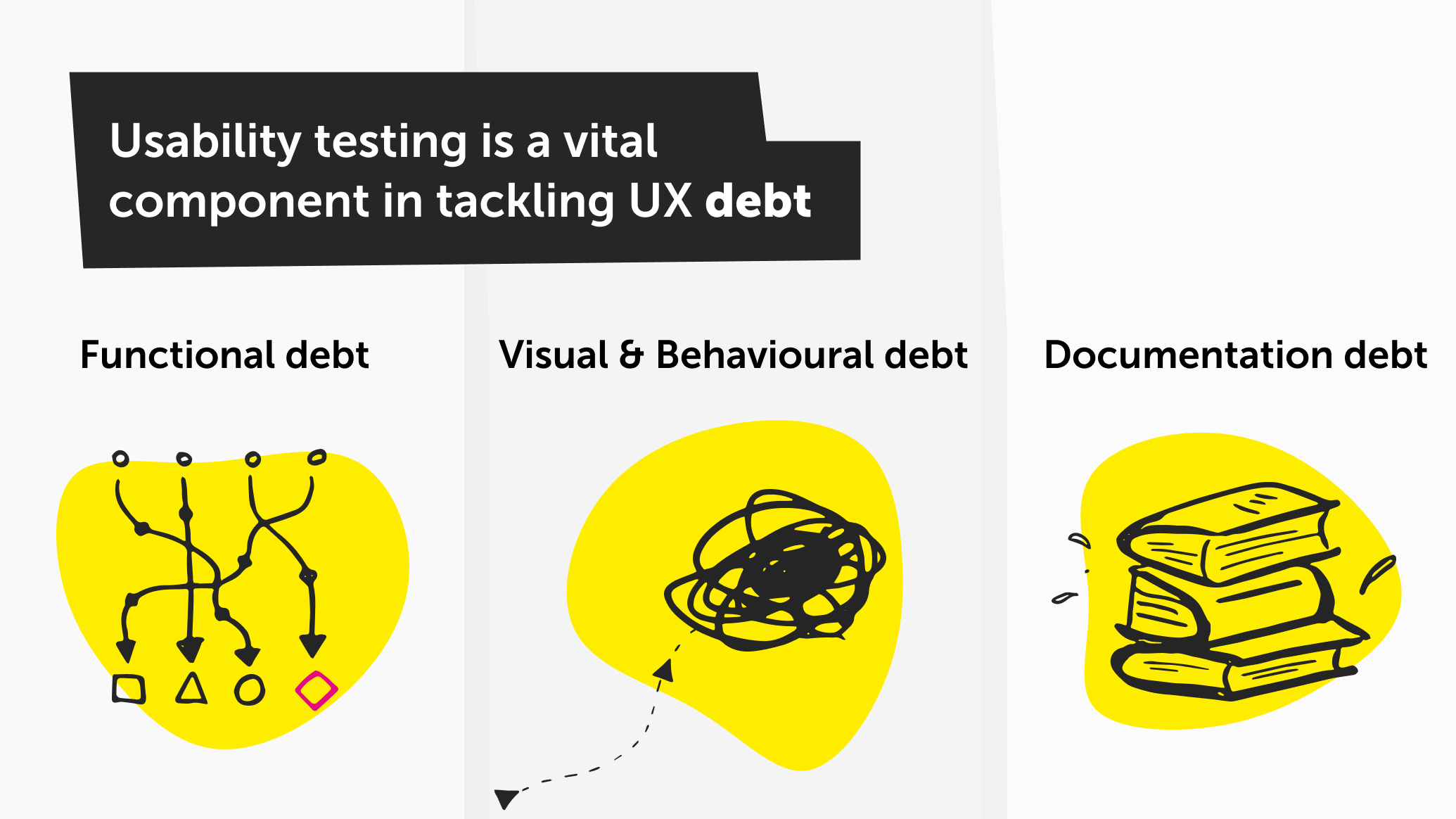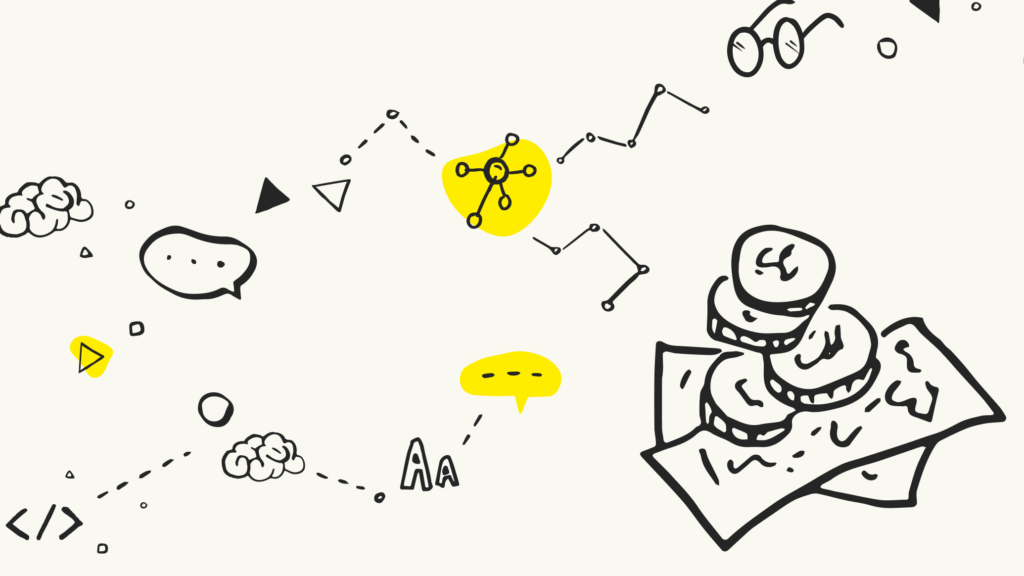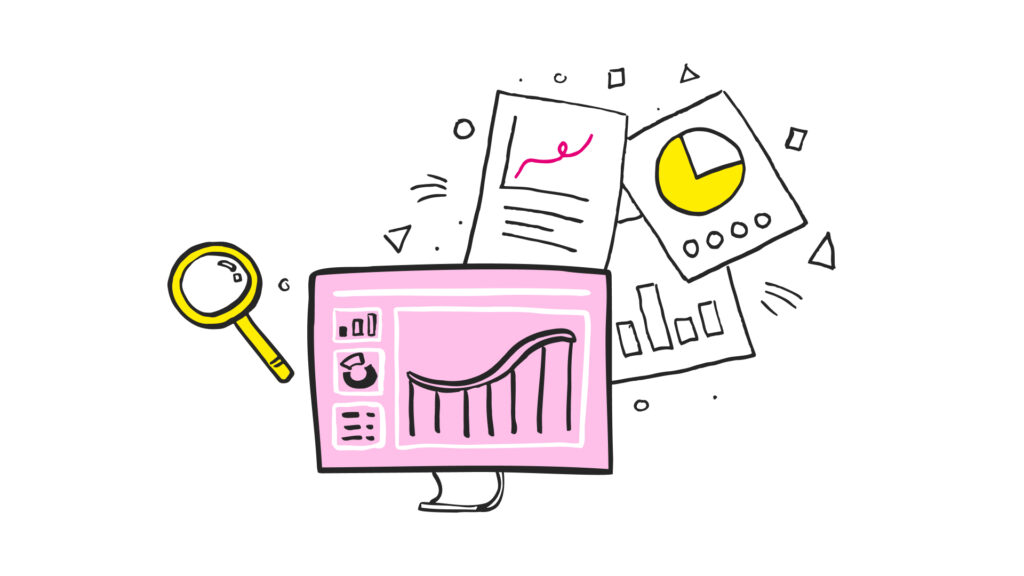
UX debt is like a loan: it gets paid back, with interest.
Whether you’re part of a well-established team enjoying renewed interest in your capabilities, a newly formed team, or a solo UX practitioner, it’s highly probable that you’re facing a significant amount of UX debt.
UX debt refers to the collection of design and usability issues that accumulate over time in a product or system. It emerges when shortcuts are taken during the design and development process, leading to less than optimal user experiences. Whether intentional or not, UX debt reflects the long-term costs incurred when user experience considerations are neglected.
UX debt can stem from various factors and is generally categorised into intentional and unintentional. Intentional debt occurs when time or scope pressures force compromises, resulting in suboptimal products. Companies might opt for an MVP (Minimum Viable Product) or MMP (Minimum Marketable Product), sacrificing specific features or functionality to meet deadlines imposed by stakeholders or the market. In doing so they accept UX debt, intending to address it in later development sprints.
On the other hand, unintentional debt arises from more systemic issues, such as the separation of design and development teams, a convoluted “design by committee” approach or a lack of end-user input. These factors can lead to guesswork and the gradual accumulation of UX debt over time.
UX debt can be further broken down into three different categories: functional debt, visual debt and documentation debt.
Functional debt
Functional debt refers to the accumulation of issues and shortcomings in the functional aspects of a user experience. It occurs when there are deficiencies or gaps in the functionality of a product or system that negatively impact the user’s ability to accomplish tasks efficiently and effectively.
UX functional debt can arise due to various reasons. It may result from rushed development timelines, limited resources or a lack of user-centred design practices. For example, if a feature is implemented quickly without thorough research or testing, it may lead to usability problems, confusing interactions or incomplete functionality.
This type of debt can also occur when user feedback and evolving user requirements are not adequately addressed or integrated into the design and development process. As a result, the product may fail to meet user expectations or industry standards.
Addressing UX functional debt requires a systematic approach. It involves identifying and prioritising the functional issues, conducting user research and testing to gain insights into user needs. By actively managing and reducing UX functional debt, organisations can improve the usability and overall user satisfaction of their products or systems.
Visual and behavioural debt
Visual and behavioural debt pertains specifically to the behaviour of the user interface. While it is often connected to functional debt, it is beneficial to categorise it separately in order to prioritise and address issues in a more detailed manner.
Visual and behavioural debt can arise from various factors. It may occur when there is a lack of consistency in design patterns, systems and interactions, or from a breakdown in communication between designers and developers. Examples of this could be inconsistent button placements, unclear navigation or unpredictable error management.
Another source of behavioural debt is the mismatch between user expectations and the actual behaviour of the product. When the product behaves in a way that contradicts users’ mental models or established conventions, it can create confusion and hinder the user’s ability to achieve their goals efficiently.
To tackle visual and behavioural debt, the key steps involve identifying and resolving inconsistencies, enhancing the clarity and predictability of interactions, and aligning the product’s behaviour with user expectations. This process typically includes conducting usability testing, gathering user feedback, and iteratively refining the design to create an intuitive and user-friendly experience.

Documentation debt
Often overlooked or deprioritised, documentation debt is the accumulation of deficiencies or shortcomings in the documentation. This leads to inefficient and ineffective design processes, collaboration and overall understanding of the user experience.
Documentation debt may result from time constraints, shifting priorities or a lack of emphasis on thorough documentation during the design and development process. For example when design decisions, rationale, or user research findings are not adequately documented, it can lead to misunderstandings, miscommunication, and difficulties in maintaining consistency across the design.
Additionally, documentation debt can occur when documentation is not kept up to date with the evolving design or when it becomes fragmented and scattered across different sources or formats. This can make it challenging for team members to access relevant information, resulting in delays, inefficiencies and potential errors during the design process.
Addressing UX documentation debt requires a systematic approach. It involves auditing to identify areas of deficiency, putting clear documentation standards and processes in place, and ensuring that documentation is consistently updated and accessible to the relevant stakeholders. Regular communication and collaboration among team members, as well as maintaining a centralised and organised repository of documentation, can help mitigate and reduce documentation debt.
Usability testing
Usability testing is a vital component in tackling UX debt. It helps observe how users interact with a product, identifying and prioritising UX debt.
By analysing the data gathered during testing, organisations gain insights into the severity and impact of UX debt. This understanding helps to determine the scale of the debt and prioritise which issues to tackle first.
Usability testing also supports an iterative design approach. After making updates to address identified issues, additional rounds of testing can be conducted to evaluate the effectiveness of the changes. This iterative process helps in gradually reducing UX debt over time, as designers and developers can assess the impact of their design improvements on the user experience and make further refinements accordingly.
Another advantage of usability testing lies in its ability to gather user feedback. Through this process, organisations gain insights into user preferences, pain points and suggestions. Integrating this feedback into the design and development process minimises UX debt, as user needs and expectations are considered from the outset.
Usability testing serves as a preventive measure against future UX debt. By involving users early and regularly in the design process, organisations can catch and address potential usability issues before they become ingrained in the product or system. Conducting regular usability testing at various stages maintains a user-centred approach and reduces the risk of accumulating future UX debt.
Can we help you?
UX debt presents a common challenge for teams and professionals in the realm of user experience design. It encompasses a collection of design and usability issues that accumulate over time, stemming from shortcuts, time constraints or a lack of user-centred practices. However, addressing UX debt is crucial for delivering exceptional user experiences. Here at Nomensa, our team of UX experts are highly skilled at identifying these issues and developing tailored solutions. Get in touch today to learn more about how we can help.
We drive commercial value for our clients by creating experiences that engage and delight the people they touch.
Email us:
hello@nomensa.com
Call us:
+44 (0) 117 929 7333




